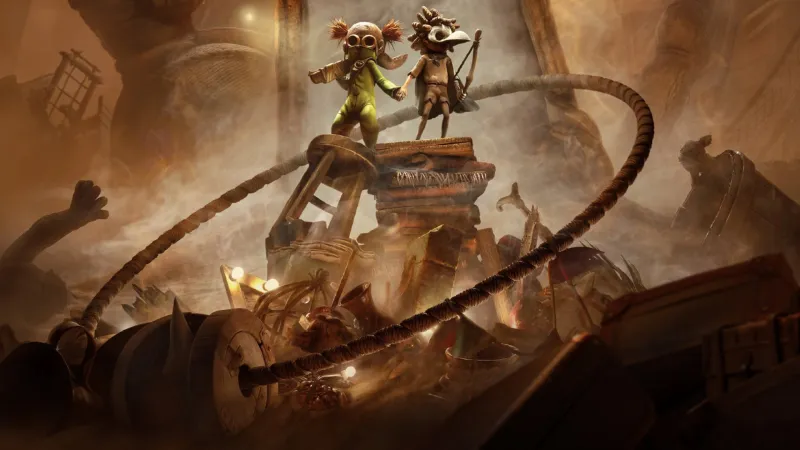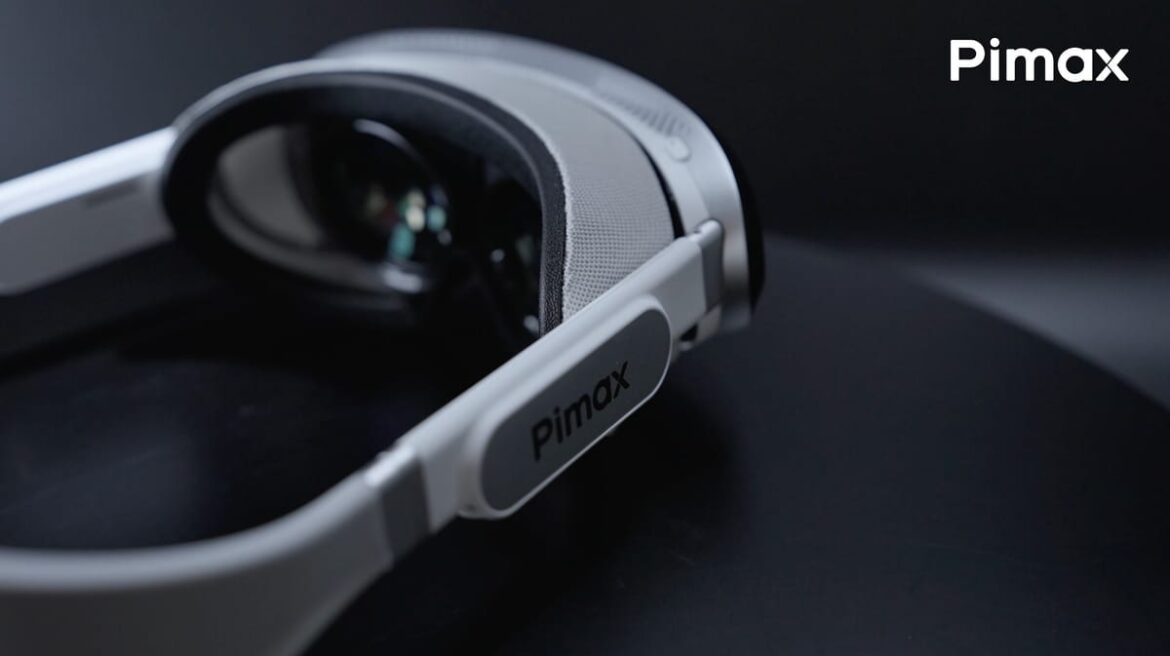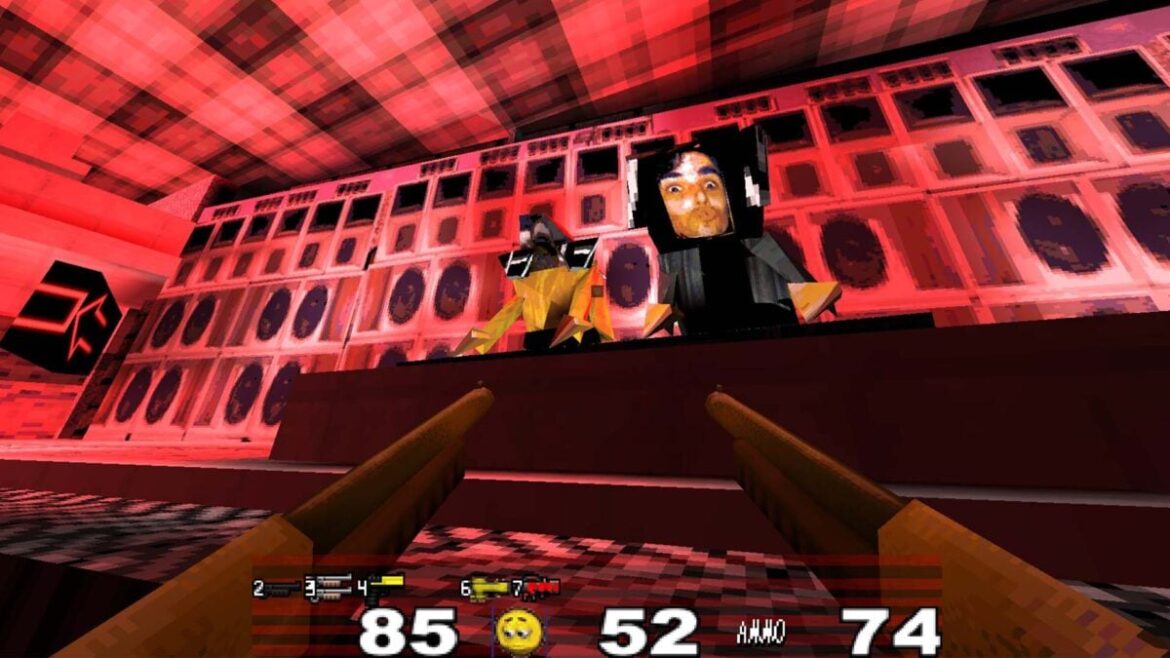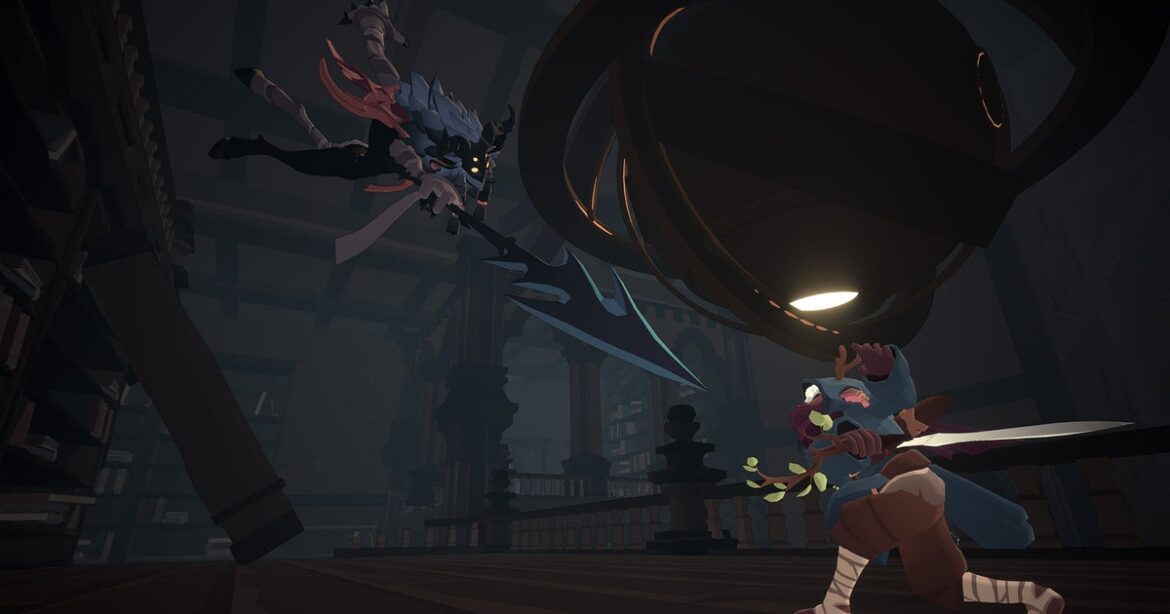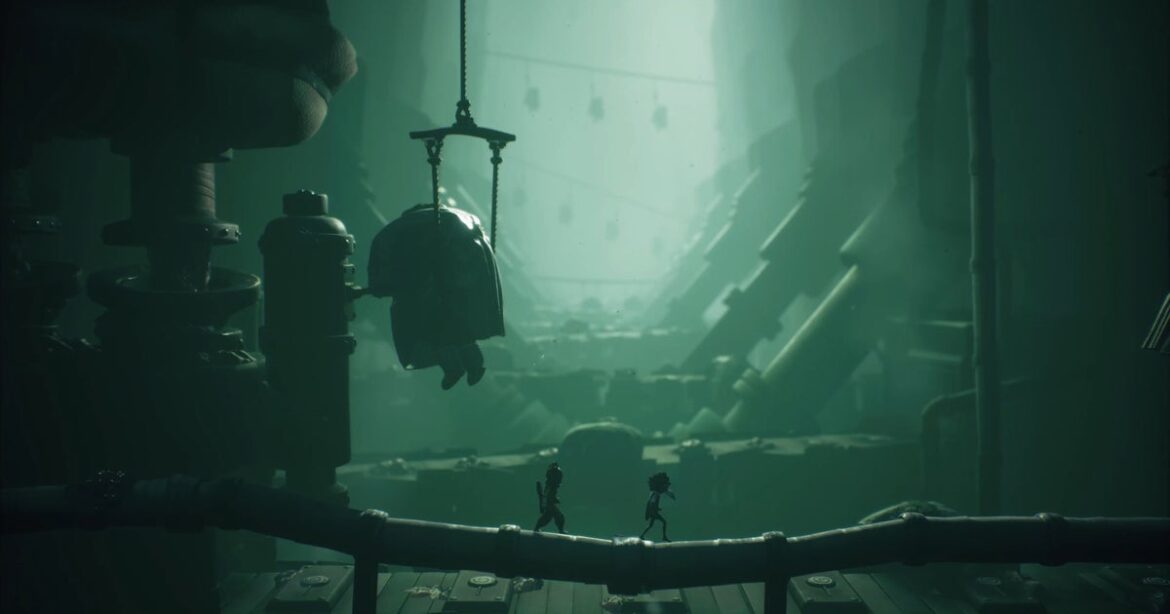It’s been four years since Little Nightmares II, and in that time, original developer Tarsier Studios has left, with Supermassive Games of Until Dawn fame stepping in to continue the series. Despite the change-up, Little Nightmares III feels right at home in this strange universe, mainly because Supermassive does little to rock the boat, instead using the series’ greatest hits and a couple of underutilized additions to create another spooky adventure.
Somehow, for the first time, Little Nightmares III features co-op and thus, two playable characters: Low, a boy wearing a white raven mask with a bow and arrow that can cut ropes and hit switches, and Alone, a girl with adorable red pigtails who carries a wrench that can smash through walls and hit low-lying buttons. I love their designs, but Low and Alone interact very little, providing no glimpses into either’s personality. The story might explain that somewhat, but I would have preferred to feel more for these little adventurers. Mechanically, the two sometimes rely on each other to advance, but it’s not nearly as often as you’d expect for a game featuring co-op.
Though co-op is a welcome addition, I’m disappointed it’s online-only. The Friend’s Pass that lets you play with someone who doesn’t own the game remedies some of my frustration, but I’m dumbfounded that the game doesn’t feature couch co-op – the entire experience feels built around communicating with someone beside you. If you want to play Little Nightmares III alone, the AI does a decent job as a stand-in.
Together, Low and Alone are trying to escape The Spiral, a mix of vignette-style locations that evoke classic fears like terrifying baby dolls, spooky carnivals, and spiders. You can expect hulking and groaning monstrosities in The Spiral, threatening the duo at every turn as they attempt to escape Nowhere. Though I enjoyed everything on screen, I was rarely surprised. Still, it remains good fun escaping Tim Burton-esque humanoids that often prompt me to say, “Nope, nope, nope,” while playing.
With the addition of Low’s bow and Alone’s wrench, I expected the typical light platforming and puzzle-solving gameplay to feel refreshed. But with only a few teamwork-focused combat set pieces and one or two other uses, these tools are largely underutilized. Little Nightmares III, like its predecessors, is a game about feeling underpowered and desperate to escape whatever house of horrors you find yourself in. Challenges include climbing and jumping over gaps, thrilling chase sequences with an added dose of terror due to who or what is pursuing you, and a smattering of simple, familiar puzzles to solve throughout.
I’d have liked more mechanical variety in every locale, as puzzles and progression through levels felt repetitive – you move a lot of boxes that you then climb atop to reach areas higher up. That said, each level’s visual and audio design makes up for those misgivings, as the details and accompanying sound design consistently fill me with awe.
Little Nightmares III delivers on the original conceit of the series with a horror-filled adventure that feels like trying to escape a nightmare you desperately want to wake up from. Outside of a few noticeable, if underbaked, additions Supermassive has introduced, I’d welcome more variation to the game’s formula. However, even if Little Nightmares III offers more of the same, it’s hard not to smile whenever Low and Alone’s adventure sends chills down my spine.

